Bamboo plants are a popular choice for screening and hedging because of their fast growth rate and ability to adapt to various climates. Bamboo can be evergreen or deciduous, providing year-round privacy or seasonal interest. When choosing Bamboo for screening or hedging, it’s important to consider the plant’s size at maturity and its sun and water requirements. Bamboo is an ideal plant for screening and hedging.

It is fast-growing, hardy, and evergreen and can be easily shaped to create the perfect privacy screen or hedge. Bamboo is also low-maintenance and drought-tolerant, making it a great choice for busy homeowners or those in dry climates. No matter which type of Bamboo you choose, plant it in an area with plenty of sunlight and well-drained soil. Bamboo is a very versatile plant, so feel free to experiment with different species to find the perfect one for your needs.
Best Bamboo Plants for Screening and Hedging
Seabreeze Bamboo
Seabreeze Bamboo is a beautiful, hardy Bamboo perfect for creating a hedge. It grows quickly and can reach heights of up to 20 feet, making it an ideal choice for privacy screening. Seabreeze Bamboo is also resistant to salt spray and wind, making it a great choice for coastal gardens. Seabreeze Bamboo is an excellent choice for a fast-growing, evergreen hedge. Seabreeze Bamboo is drought tolerant and does not require much irrigation once established. Bamboo can create privacy screens and windbreaks or add greenery to your yard.
Multiplex Hedge Bamboo
Hedge Bamboo is a type of Bamboo that is often used to create privacy hedges or screens. There are many different types of hedge Bamboo, but one of the most popular is Multiplex Hedge Bamboo. Multiplex Hedge Bamboo is a fast-growing type of Bamboo that can reach heights of up to 20 feet. Its thick, woody stems and large leaves make it ideal for creating a privacy hedge.
In case you missed it: 16 Best Evergreen Flowering Shrubs for Hedges
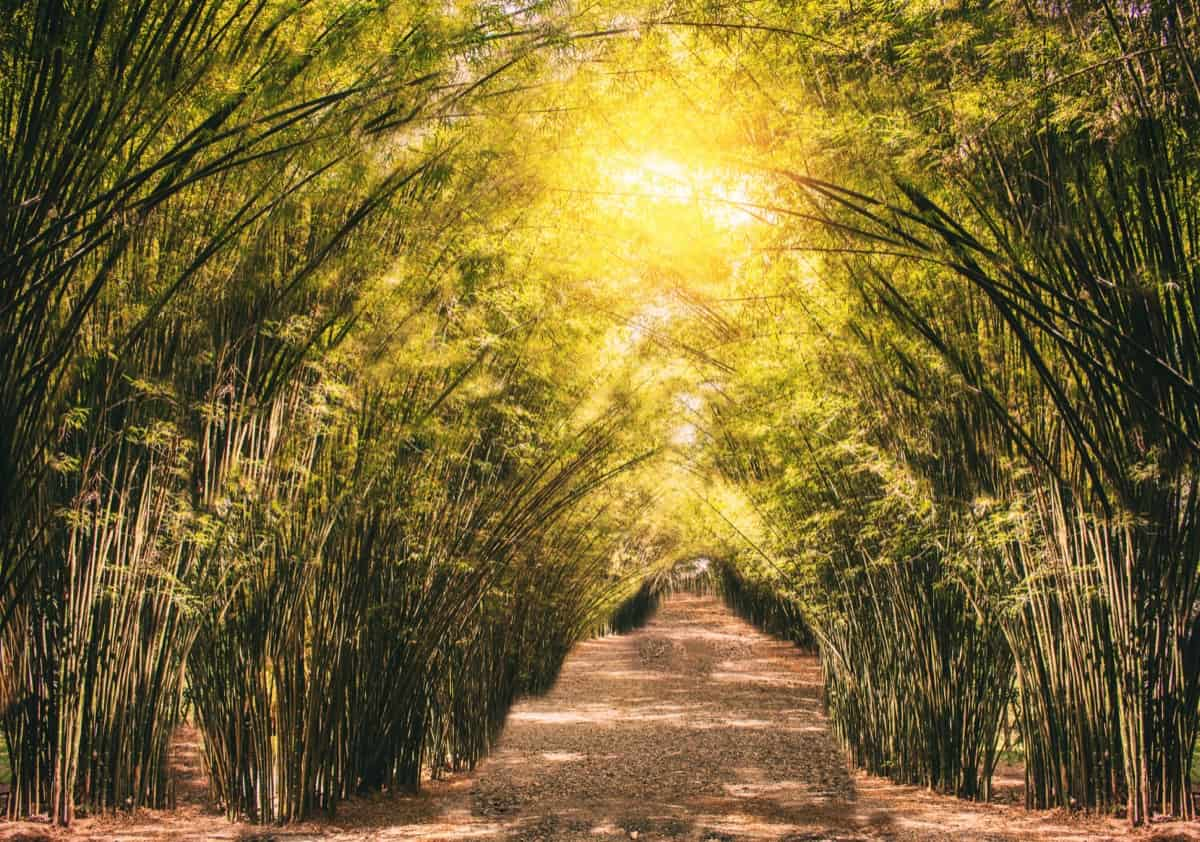
This type of Bamboo is also relatively drought-tolerant, so it can be the best choice for those who live in dry climates. Multiplex Hedge Bamboo is a fast-growing variety that can reach up to 20 feet tall. It has dark green leaves and culms that are yellowish-green in color. Multiplex Hedge Bamboo is drought tolerant and does well in full sun or partial shade. Multiplex Hedge Bamboo may be the right choice if you’re looking for a fast-growing, privacy-providing plant.
Alphonse Karr Bamboo
Alphonse Karr Bamboo is a beautiful, Hardy hedge Bamboo that grows up to 30 feet tall. It’s perfect for creating privacy or blocking out unwanted views. The culms are slender and have a yellow-green stripe running down the center. Alphonse Karr is a fast-growing Bamboo, perfect for quickly creating a dense hedge.
Alphonse Karr Bamboo is one of the best Bamboo for a hedge. Alphonse Karr Bamboo is drought-tolerant and deer-resistant. It is also one of the few Bamboo that does not have invasive roots. The culms are thick and have a yellowish color with black stripes. This Bamboo is also known for its resistance to cold temperatures and is a great choice for areas that experience colder winters.
Fountain Bamboo
Fountain Bamboo is one of the best Bamboo for a hedge. It is a hardy, evergreen Bamboo reaching up to 15 feet tall. Fountain Bamboo has wide, dark green leaves and grows in dense clumps. This Bamboo is fast-growing and easy to care for, making it a great choice for those looking to add a tropical flair to their landscape. Fountain Bamboo is a striking, hardy evergreen perfect for creating a hedgerow.
Fountain Bamboo is a beautiful species of Bamboo that is perfect for creating a hedge. Bamboo is characterized by its upright growth habit and lush green foliage. Fountain Bamboo grows best in full sun to partial shade and prefers moist, well-drained soils. Once established, this tough plant is drought-tolerant and can tolerate brief flooding periods. Fountain Bamboo makes an excellent houseplant or patio plant when grown in containers.
In case you missed it: Fast Growing Hedges for Privacy – a Full Guide
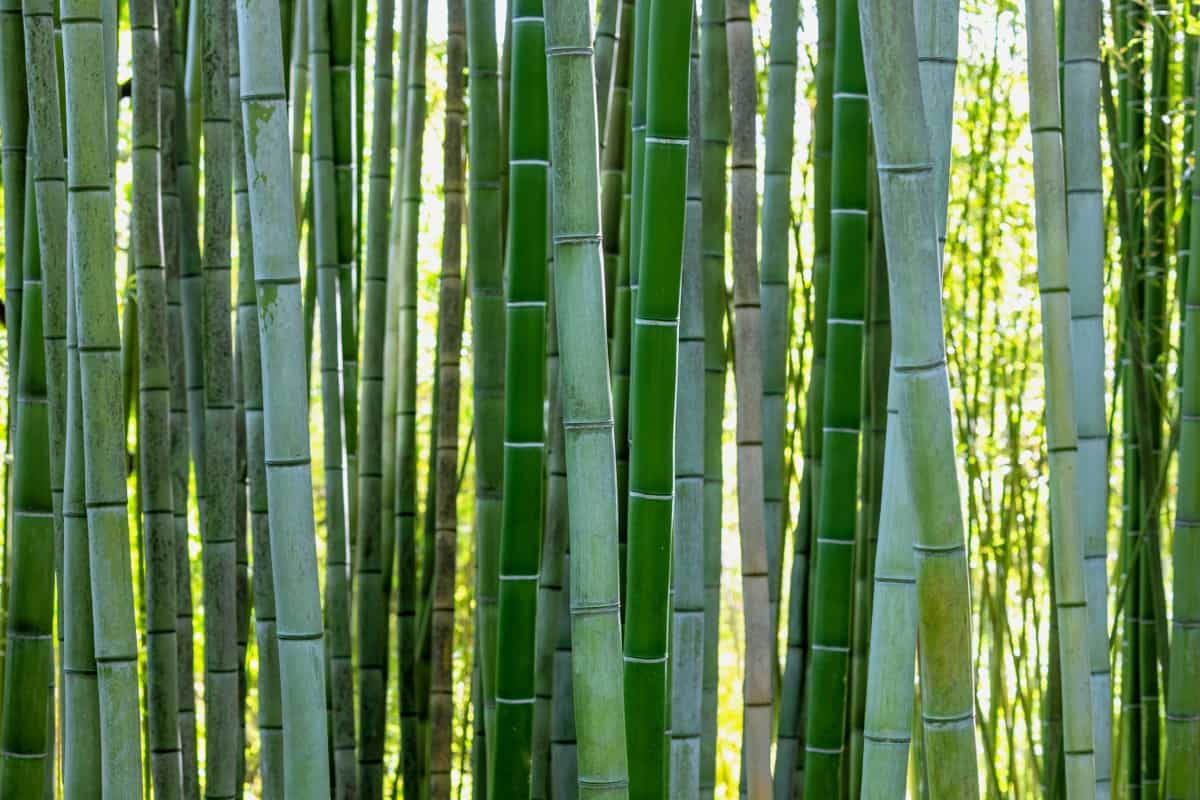
Arrow Bamboo
Arrow Bamboo is an evergreen perennial with grass-like leaves and stout, upright stems. It can grow to 10 feet tall and 6 feet wide, making it an excellent choice for a hedge or privacy screen. This Bamboo tolerates full sun to partial shade. Arrow Bamboo is fast-growing and relatively easy to care for, although it does require regular watering during the growing season.
The culms are erect and have a yellow-green to light-green color. The leaves are lanceolate and measure 2-3 inches long. The inflorescences are borne on the tips of the culms and have white flowers. It is one of the best bamboos for creating a hedge, as regular pruning can easily control it. Arrow Bamboo is also very versatile, as it can be used for formal and informal hedges.
Umbrella Bamboo
Umbrella Bamboo is a fast-growing, hardy species that can reach up to 15 feet tall. It is one of the best bamboos for creating a privacy hedge or screen, as it has dense foliage and thick culms. Umbrella Bamboo is also relatively cold-tolerant, making it a good choice for regions with cooler winters. This species does spread via underground rhizomes, so it is important to choose a planting location carefully.
The plant grows about 15 feet tall and has large leaves resembling an umbrella. Umbrella Bamboo wood is strong and durable, making it a good choice for furniture or construction. The plant is also known for its ability to withstand high winds and heavy rains. It is also very drought tolerant, making it a good choice for dry climates. This Bamboo does best in full sun to partial shade, and its roots are not invasive, so it is perfect for use near walkways or other areas where you don’t want the roots to cause damage.
Fargesia Robusta
Fargesia Robusta is one of the best species to use for a hedge. It is very dense, making it an excellent privacy screen. This Bamboo is also very hardy and can withstand cold temperatures. It is a clump-forming evergreen perennial with yellow-green leaves and culms that turn reddish brown with age. The flowers are produced in early summer and are small and greenish-white, borne on short spikes.
In case you missed it: 12 Common Bamboo Plant Problems: How to Fix Them, Solutions, and Treatment
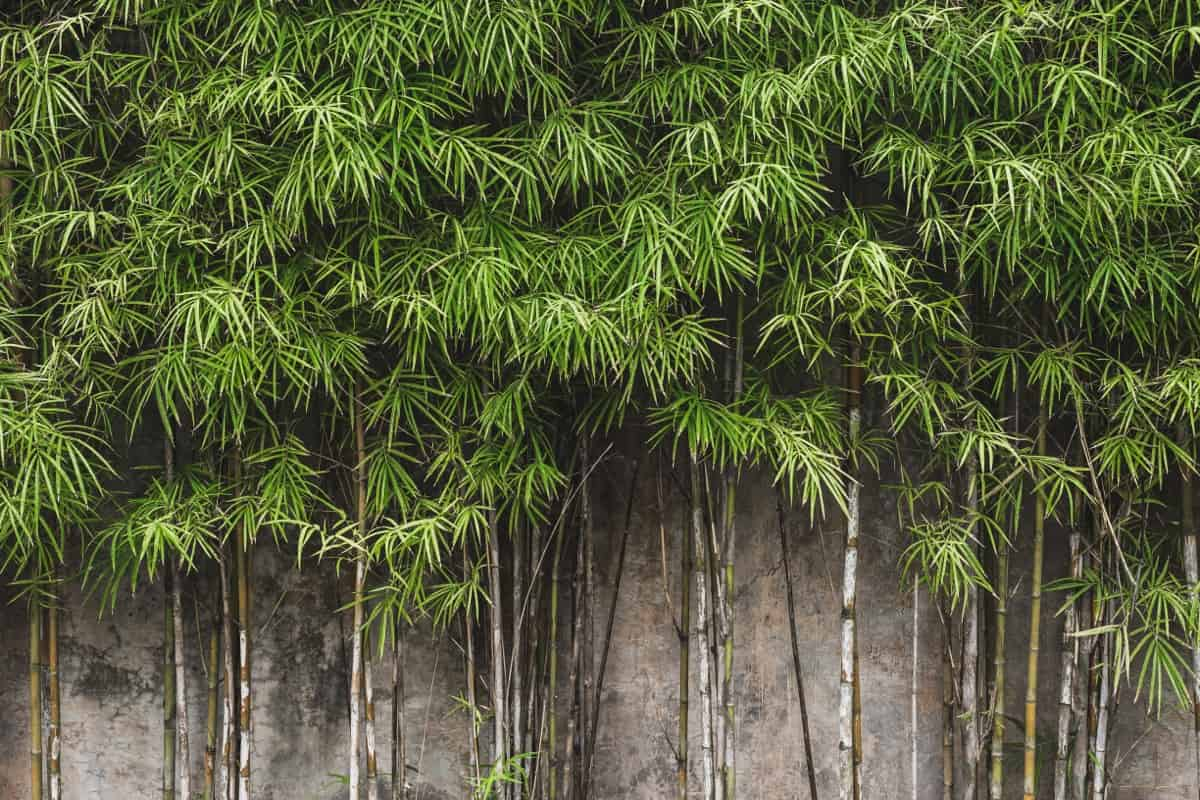
Fargesia Robusta is widely cultivated as an ornamental plant in temperate regions of the world for its architectural qualities, fast growth rate, and tolerance to cold winters. It is one of its genus’s hardiest members, tolerating temperatures of at least −20 °C. Fargesia Robusta is one of the best bamboos for a hedge. It has thick, dark green leaves and produces dense, lush foliage. Fargesia Robusta is an excellent choice for creating a privacy screen or windbreak.
Japanese Timber Bamboo
Japanese Timber Bamboo is a fast-growing, evergreen plant that can reach 20 feet in height. The culms (stems) are thick and sturdy, with a diameter of up to 10 centimeters. The leaves are large, and the plant produces small, yellowish-white flowers in summer. Japanese Timber Bamboo is widely grown as an ornamental plant, and its timber is used in construction and furniture-making. Japanese Timber Bamboo is the largest and most widely cultivated timber Bamboo species.
It has been used for centuries for construction, furniture-making, and paper-making. The culms are green when young but turn yellow or brown as they mature. The leaves are large and ovate, with serrated edges. The flowers are small and white, in panicles up to 1 meter long. Japanese Timber Bamboo is fast-growing and tolerant of various climates and soils. However, it can be invasive in some areas, so care should be taken when planting it near natural areas.
Robert Young Bamboo
Bamboo is an excellent plant for screening and hedging because it grows quickly and can be easily trimmed to the desired height. There are wide varieties of Bamboo, but Robert Young Bamboo is one of the best for these purposes. It has a strong, upright growth habit and can reach heights of 20 feet.
Robert Young Bamboo is also relatively drought-tolerant, so it can be grown in areas that do not receive a lot of rainfall. It is one of the cold hardy Bamboos, able to withstand temperatures below -20°C. Robert Young Bamboo is an excellent plant for privacy screening and hedging and for providing food and shelter for wildlife.
Ruscus Bamboo
Bamboo plants are a fast-growing, versatile option for screening and hedging. Ruscus Bamboo is a type of Bamboo that is well suited for use as a screen or hedge. Ruscus Bamboo grows quickly and can reach heights of up to 7 feet. It has dark green leaves and can tolerate partial shade. Ruscus Bamboo is an evergreen plant that will keep its leaves year-round. This makes it a good choice for regions with cold winters.
If you are looking for a Bamboo plant perfect for screening and hedging, consider Ruscus Bamboo. This type of Bamboo is incredibly versatile and can be used in various ways. Additionally, it is very easy to care for and maintain, making it a great option for those not looking to spend much time on upkeep.
In case you missed it: How to Prepare the Soil for Bamboo Plants: A Beginners Guide for Best Soil Mix, pH, and Compost
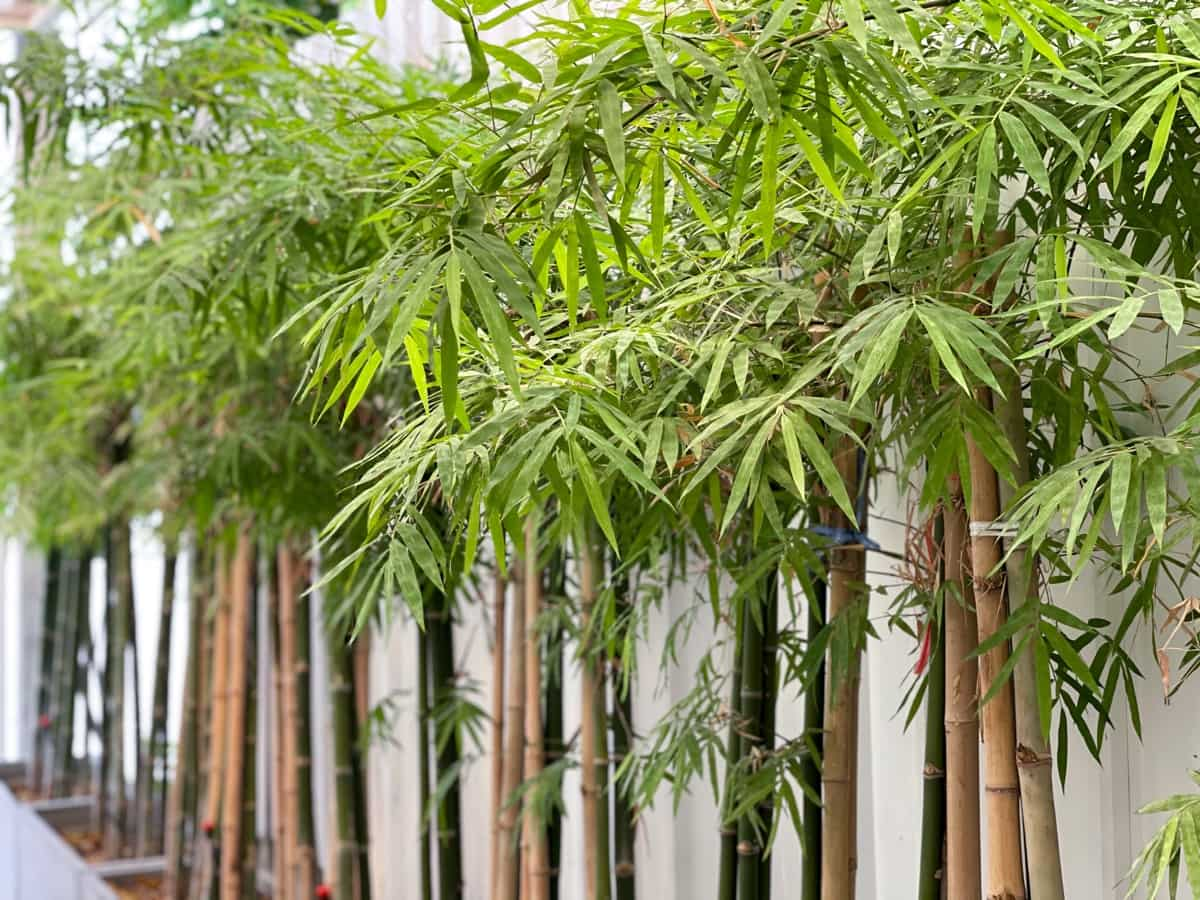
Dragon Head Bamboo
Dragon Head Bamboo is a good option if you’re looking for an unusual Bamboo for screening or hedging. This type of Bamboo is known for its thick, lush foliage that provides excellent privacy and noise reduction. Dragon Head Bamboo is also relatively fast-growing, so it can quickly create a dense screen or hedge. Dragon Head Bamboo is an excellent choice if you’re looking for a plant that will provide beauty and function to your landscape.
Tips for Maintaining Bamboo Hedge
Bamboo plants make excellent screening and hedging plants. They are fast-growing, evergreen, and can be easily controlled with regular pruning. Bamboo is also a versatile plant used in various landscape designs. When choosing Bamboo plants for screening or hedging, selecting a species appropriate for your climate and soil type is important. There are both tropical and cold-hardy varieties of Bamboo, so be sure to research before purchasing.
Once you have selected the right Bamboo plants for your needs, it is time to install them. Bamboo is best planted in moist, well-drained soil. It is also important to provide plenty of room for the roots to spread out, so be sure to dig wide holes when planting. After planting, water your Bamboo regularly to keep the soil moist (but not soggy).
Bamboo does not tolerate drought conditions well, so give it enough water during dry periods. Fertilize your Bamboo every few months with a balanced fertilizer to promote healthy growth. Once your Bamboo is established, you must regularly trim it to control its size and shape. Bamboo grows quickly, so staying on top of the pruning is important. Regular trimming will also help promote bushier growth.
In case you missed it: Bamboo Planting Ideas, Methods, Tips, and Techniques
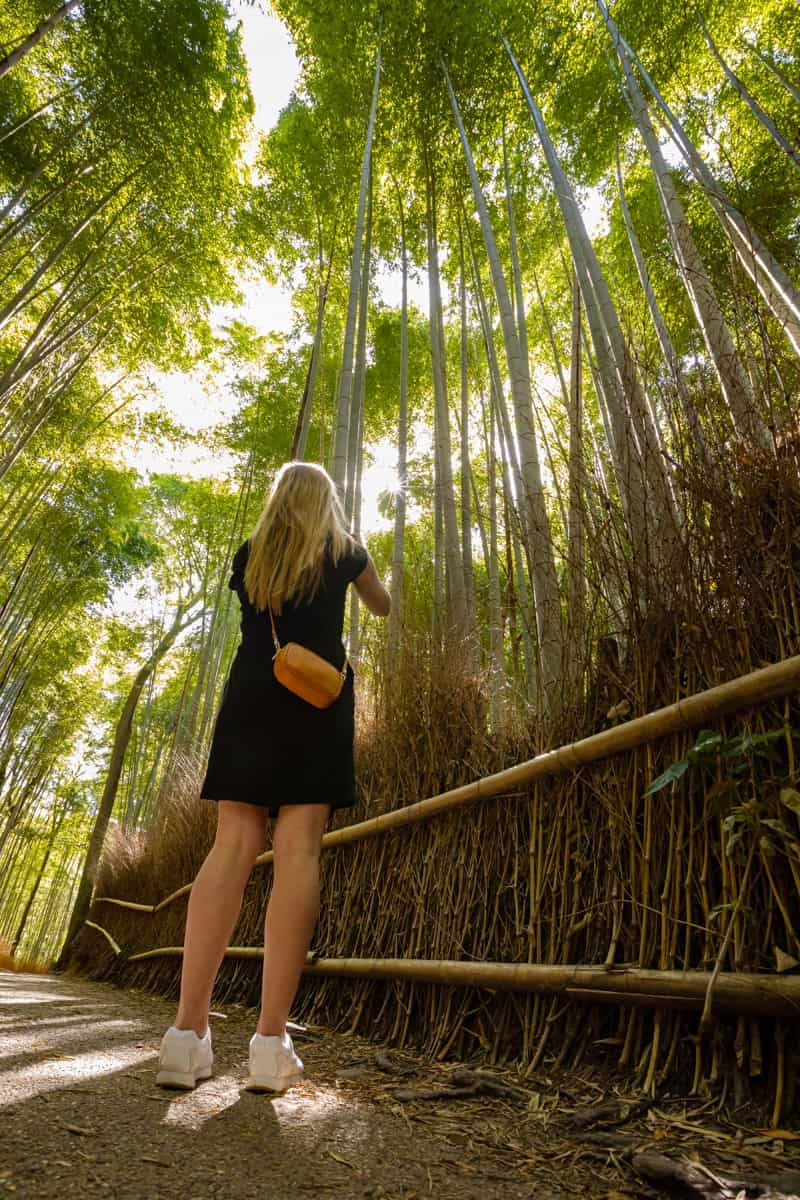
Conclusion
The best Bamboo for a hedge is one that is both fast-growing and dense. Bamboo plants are a great way to create screening and hedging in your garden. They offer privacy, create an attractive backdrop for other plants, and even help reduce noise pollution. Plus, Bamboo is easy to care for, fast-growing, and resilient making it a popular choice for homeowners who want to upgrade their gardens quickly. You can easily incorporate Bamboo into your landscaping plan with the right species selection and proper planting techniques.
- Where to Place Indoor Plants in Your Home
- How to Grow Tomatoes Organically at Home: A Comprehensive Guide
- Organic Gardening on a Budget: Low-Cost Methods and Materials
- Gongura Seed Germination and Planting Methods
- Cabbage Seed Germination and Selection
- Broccoli Seed Germination and Selection
- Asparagus Seed Germination and Variety Selection
- Seasonal Flower Gardening: Best Practices for Spring, Summer, Fall, and Winter
- How to Grow Hibiscus from Flower
- Plantation Ideas for Home Decoration: A Beginners Guide
- Flower Garden Designs and Layouts for Beginners
- Planting and Spacing Techniques in Papaya: A Beginner’s Guide
- Growing Gold: Essential Techniques for Planting Pineapples
- How to Make Kalanchoe Plant Bushy: Home Remedies and Solutions
- 11 Reasons Why Your Gardenia is Not Blooming: Home Remedies and Solutions
- Eco Elegance: The Guide to Designing a Drought-Tolerant Landscape
- Gardening on a Slope: Strategies for Hillside Landscaping
- Nourish and Flourish: Top Organic Mulches for Thriving House Plants
- Everything You Want to Know about Indian Mogra Flower: Discover Uses and Growing
- Green Thumb Success: Expert Tips for Cultivating Greenhouse Pumpkins All Year Round
- Maximize Growth & Flavor: The Ultimate Guide to Companion Planting in Herb Gardens
- How to Control Rhododendron Problems Naturally: Home Remedies and Organic Ways to Fix Them
- Natural Magic: The Remarkable Benefits of Cinnamon for Plants
- Best Steps to Revive Dying Tulip with Natural and Organic Treatment
- 10 Reasons Why Your Angel Trumpet is Not Blooming: Remedies and Treatment
- How to Fix Periwinkle Leaf and Flower-Related Problems: Natural Remedies and Solutions
- How to Fix Zinnias Leaf and Flower Problems: Discover Natural and Home Remedies
- Organic Steps to Induce Lemon Tree Flowers: A Comprehensive Guide
- Bloom Booster: Crafting the Perfect Homemade Bougainvillea Fertilizer
- Optimizing Growth: A Guide to Applying NPK Fertilizer for Potted Plants
- 10 Best Homemade Fertilizers for Rubber Plant: DIY Recipes and Application Method
- How to Boost Female Pumpkin Flowers: Effective Steps for More Flowers and High Yields
- Transform Your Indoor Garden: Top Benefits of Pink Salt for Houseplants
- 10 Best Homemade Fertilizers for Peacock Plants (Calathea): Easy DIY Guide
- Unlock Blooms: 9 Reasons Why Your Potted Chrysanthemum is Not Blooming
- 8 Reasons Why Your Potted Hibiscus is Not Blooming: Fix it with Simple Solutions